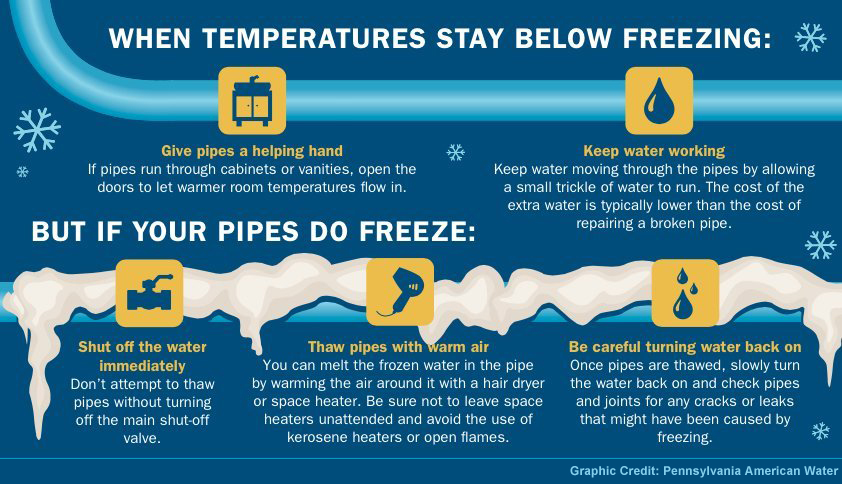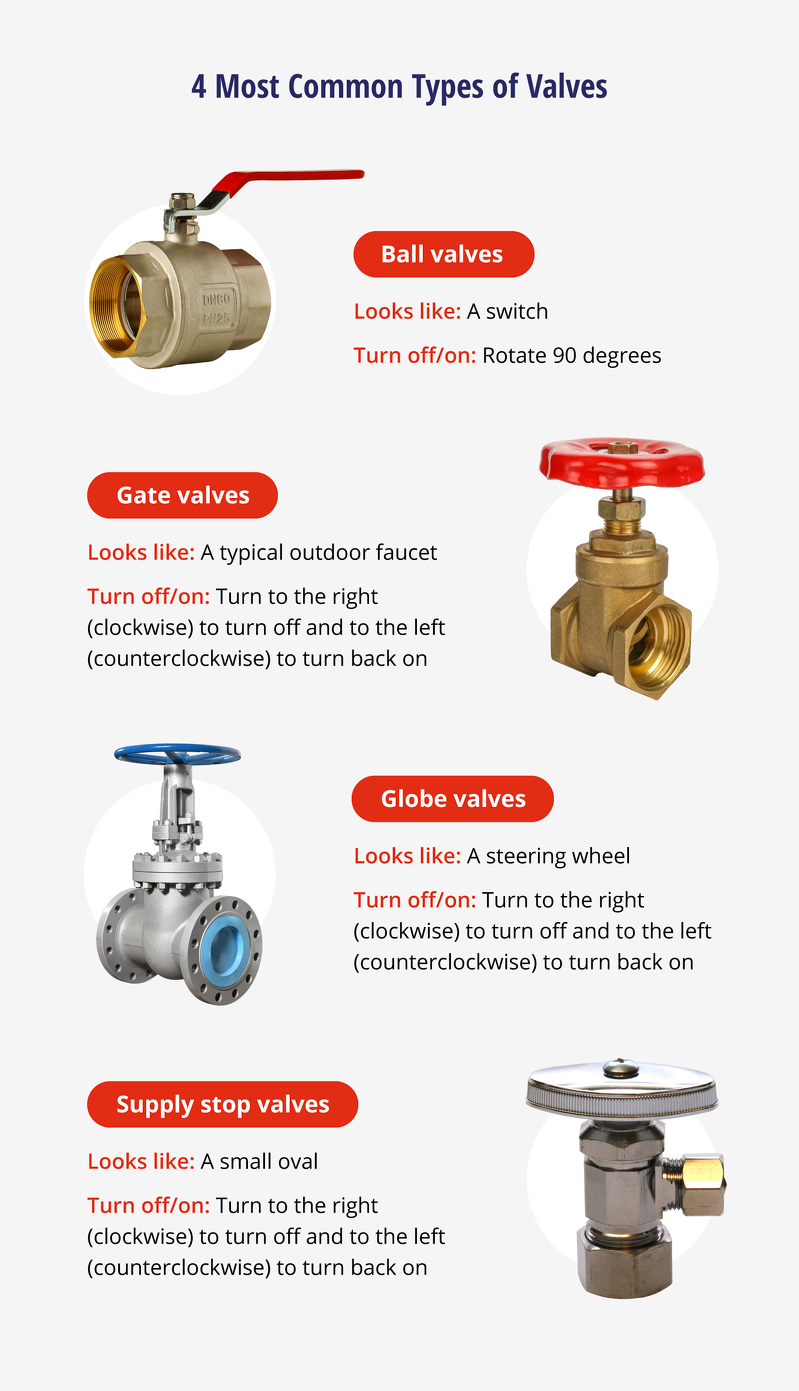Imagine you’re in the middle of a plumbing emergency or simply doing routine maintenance, and you find yourself needing to turn off the main water valve. You twist the valve tightly, expecting an immediate halt to the water flow.
But, surprisingly, water continues to trickle. How long should you wait for it to stop completely? This question often puzzles many homeowners and can lead to unnecessary stress and panic. Understanding the time it takes for water to stop after turning off the main valve can save you from frustration and potential water damage.
We’ll unravel the mystery and provide you with clear insights. So, if you’re eager to discover the factors that influence this process and how you can manage it effectively, keep reading. Your peace of mind could be just a few scrolls away.

Credit: diy.stackexchange.com
Factors Affecting Water Flow
Turning off the main valve doesn’t stop water immediately. Pipe length and pressure affect the delay. Usually, it takes seconds to a few minutes for the water flow to cease completely after shutting off the valve.
Turning off the main water valve is often a quick fix to stop water flow in emergencies, but the time it takes for water to actually stop can vary. Understanding the factors that affect this can save you time and frustration. Let’s dive into the elements that play a role in how quickly water stops after the main valve is shut off.Terrain And Topography
The landscape around your home can influence water flow. If you live on a slope, gravity might cause water to drain faster. On flat terrain, water can take longer to stop as it needs to travel further to settle.Soil Composition
Soil type is a significant factor. Sandy soil absorbs water quickly, which can speed up drainage. Clay-heavy soil retains water longer, delaying the time it takes for water to stop completely.Vegetation Impact
Plants and trees around your property also play a role. Their roots can absorb water, helping to reduce the flow faster. However, dense vegetation can sometimes trap moisture, slowing down the process.Man-made Structures
The presence of man-made features like driveways, patios, and underground pipes can alter water flow. Structures can redirect or block water, affecting how long it takes for water to stop. Have you ever noticed a delay in stopping the water flow and wondered why? Understanding these factors can help you anticipate and manage the situation more effectively.Natural Water Flow Cycles
Understanding natural water flow cycles aids in comprehending water dynamics. These cycles influence how water behaves after turning off the main valve. Each element in the cycle plays a role in water distribution. Let’s explore these elements.
Rainfall And Precipitation
Rainfall replenishes water sources. It affects how quickly water stops flowing. Areas with regular rain have more predictable water flow. Drought-prone regions may experience delays. Rain also determines groundwater levels.
Evaporation Rates
Evaporation affects water availability. High temperatures increase evaporation rates. This reduces water levels in reservoirs and storage. Cooler climates slow down evaporation. This maintains higher water levels.
Seasonal Variations
Seasons impact water cycles significantly. In rainy seasons, water levels rise. This leads to faster flow stoppages when valves close. During dry seasons, water takes longer to recede. Seasonal shifts dictate water availability.
Water Management Techniques
Turning off the main valve stops water flow within minutes. This time can vary based on pipe size. Proper maintenance helps in quick water stoppage.
Water management techniques play a crucial role in ensuring that our water supply is reliable and sustainable. Understanding how these techniques work can help you appreciate the complexity and importance of water systems in your daily life. Have you ever wondered how you can contribute to better water management practices? Let’s dive into some key techniques that can make a difference.Dams And Reservoirs
Dams and reservoirs are vital for controlling water flow and storage. They help regulate the amount of water available during dry periods and prevent flooding during heavy rains. Imagine how a dam can transform a rushing river into a manageable source of water for your community. Did you know that some dams are designed to generate electricity as well? This dual-purpose design not only provides water but also powers homes. Next time you see a dam, think about its crucial role in both water management and energy production.Drainage Systems
Efficient drainage systems ensure that excess water is quickly removed from roads and urban areas. This prevents flooding and minimizes water damage to infrastructure. Have you ever noticed how streets are designed with slight slopes and gutters? These are part of an intricate drainage system. Even simple techniques like maintaining clear gutters in your home can contribute to effective drainage. When rainwater flows smoothly, it reduces the risk of flooding in your neighborhood.Water Conservation Methods
Water conservation methods focus on reducing water wastage and ensuring sustainable use. Simple actions like fixing leaks and using water-saving appliances can make a huge difference. Have you considered how much water a dripping tap wastes over time? By collecting rainwater for gardening, you can save gallons of water and reduce your utility bill. Think about how these small changes in your daily routine can contribute to a larger cause of conserving water. As you explore these techniques, ask yourself: How can you incorporate better water management practices into your life? Taking small steps toward responsible water use not only benefits you but also supports the community and environment.
Credit: ntpud.org
Impact Of Climate Change
Climate change affects many aspects of our lives. It even impacts water supply systems. Understanding these effects helps us prepare for future challenges. With climate change, the time it takes for water to stop after turning off the main valve might vary. Let’s explore some factors related to climate change.
Changing Rainfall Patterns
Rainfall patterns are shifting due to climate change. Some regions face increased rain, while others see less. This imbalance affects water availability. In places with less rain, aquifers and reservoirs deplete faster. Thus, it takes longer for water to stop after turning off the main valve. Regions with more rain may see quicker water stoppage due to higher availability.
Increased Evaporation
Higher temperatures cause more evaporation. This means water sources like lakes and rivers dry up faster. As a result, water pressure in supply systems decreases. It may cause delays in stopping water after shutting the main valve. Evaporation reduces the amount of stored water. This impacts overall water supply efficiency.
Flood And Drought Incidences
Floods and droughts are becoming more frequent. Both impact water supply systems. During floods, infrastructure can suffer damage. It might lead to unexpected water flow issues. Droughts cause water scarcity. This affects how quickly water stops after closing the valve. Both scenarios demand better water management strategies.
Human Interventions
Turning off the main valve typically stops water flow within a few minutes. Factors like pipe size and system pressure can affect this time. Waiting longer might be necessary in older systems.
Human interventions play a significant role in how long it takes for water to stop after turning off the main valve. The activities we engage in daily can have surprising effects on water systems. Understanding these impacts can help you make more informed decisions about water usage and conservation.Urban Development
Urban development often leads to increased water demand. High-rise buildings and expanded infrastructure put pressure on existing water systems. You might notice a delay when turning off the main valve in densely populated areas due to this strain. New construction may also affect water pressure. Think about a time when a new building was being constructed near your home, and you experienced changes in water pressure. Urban sprawl can complicate water flow, prolonging the time it takes for the water to stop completely.Agricultural Practices
Agriculture consumes a lot of water. Farms rely on irrigation systems, which can alter water availability in nearby communities. If you live in an agricultural area, you might find that the water doesn’t stop immediately after shutting off the main valve. Consider how water-intensive crops affect local resources. Has your area experienced water shortages due to farming? Adjusting agricultural practices could lead to more efficient water usage, benefiting everyone.Industrial Activities
Factories and industrial plants are major water users. They require large volumes of water for production processes. This usage can impact how quickly water stops flowing when you turn off the main valve. Think about industries in your area and their water needs. Are there local regulations in place to manage industrial water use? Encouraging industries to adopt water-saving technologies can help stabilize local water systems. Each of these human interventions highlights the interconnectedness of our daily activities and water systems. What steps can you take to reduce your water footprint? Being aware of these factors can lead to better water management and conservation efforts.Predicting Water Flow Cessation
Predicting water flow cessation is a critical task, especially when dealing with water supply systems in homes or larger infrastructures. You might wonder how long it takes for water to completely stop flowing after you’ve turned off the main valve. This isn’t just about the moment you twist the valve; several factors come into play. Understanding these can help you plan maintenance, avoid water wastage, and prevent potential damage.
Hydrological Modeling
Hydrological modeling uses mathematical simulations to predict water movement. If you’ve ever tried to fix a leak, you know it’s not just about shutting off the valve. The model considers the pipe’s size, water pressure, and system layout. Imagine adjusting a garden hose nozzle; it’s about controlling flow and pressure. These models help you estimate how long water will continue to flow after the valve is shut.
Weather Forecasting
Weather forecasting plays a surprising role in water flow prediction. Heavy rain or storms can increase pressure and cause delays in stoppage. Have you noticed how water flows differently on a rainy day? Forecasting tools can anticipate such changes, helping you prevent overflow or drainage issues. This means you can better plan your water usage and maintenance schedules.
Satellite Monitoring
Satellite monitoring offers real-time insights into water systems. Imagine being able to see the entire water network from above. Satellites track changes in water flow, providing data on pressure and distribution. This is especially useful for large-scale water systems. Wouldn’t it be helpful to know exactly when your system will be affected by external factors? Satellite data can help predict water flow cessation more accurately.
So, next time you turn off that main valve, consider these factors. Are your predictions based on gut feeling, or are you leveraging science and technology? Understanding these dynamics can save you time and prevent unnecessary water loss. What strategies have you found effective in managing water flow cessation?

Credit: rainbowrestores.com
Frequently Asked Questions
Why Does Water Keep Running After Valve Closure?
Water may continue due to residual pressure. Pipes need time to drain completely.
How Long For Water To Fully Stop?
Typically, water stops within minutes. It varies based on pipe size and building layout.
What Factors Affect Water Stop Time?
Pipe size, building height, and water pressure impact how quickly water ceases.
Can Air In Pipes Delay Water Stopping?
Yes, trapped air can push water out longer. Proper drainage helps resolve this.
Is It Normal For Water To Drip After Turning Off?
Yes, some dripping is normal. Remaining water in pipes may take time to drain.
Conclusion
Turning off the main valve stops water flow, but timing varies. Consider pipe size, water pressure, and system type. Large pipes may take longer to drain. Low pressure can slow water cessation. Gravity systems might delay water stop. Always plan for extra time.
Check for leaks after shutting off the valve. Leaks can prolong water flow. Regular maintenance helps ensure quick stops. Call a plumber if unsure about valve operation. It’s important for efficient water control. Understanding these factors aids in managing your water system better.
Stay informed for smooth water management.
